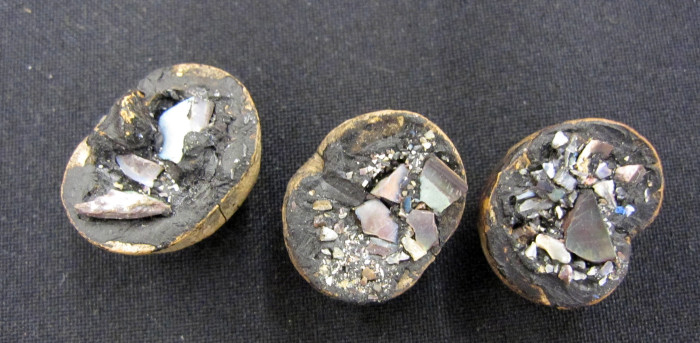US Chumash Nation Game of Chance: "Pi"
Collection: Everyday Connections
These are Chumash die used to play a gambling game called "pi." The die were made by halving acorn or walnut shells, filling them with tree pitch or tar, and pressing pieces of shiny abalone shell into the pitch to decorate the flat side of the shell.
To play the game of pi, players roll the die three times. Players gamble on whether they will roll an even number or odd number of dice with their decorated sides up. If they guess correctly, they earn a counter stick. The players take alternate turns, keeping their odd or even choice for the whole game. The first player to get all the sticks wins.
The Chumash Indian homeland lies along the coast of California, between Malibu and Paso Robles, as well as on the Northern Channel Islands. The area was first settled about 13,000 years ago. Over time, the population increased and the people adapted their lifeways to the local environment. Villages along the coastline, on the islands and in the interior had access to different resources, which they traded with one another. This trade was made possible in part by the seagoing plank canoe, or tomol, which was invented about 2,000 years ago.
In addition to the plank canoe, the Chumash are known for their fine basketry, their mysterious cave paintings and their money made from shells.
Source:
http://wource:ww.sbnature.org/research/anthro/chumash/index.htm http://www.rain.org/camp96/chumash_do1.html
